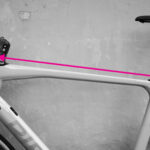Many cyclists, especially women, have experienced the discomfort and pain that can arise from bike riding. For years, accepting saddle pain was almost seen as part of the cycling experience. However, it’s crucial to understand that pain while Bike Sitting Down is not something you have to endure. Finding the right saddle and achieving the correct bike fit can transform your ride from painful to pleasurable.
If you’re new to cycling, or increasing your ride distances, some initial soreness is normal, similar to sitting on any firm surface for an extended period. However, persistent, sharp pain, numbness, or swelling in your sensitive areas is a clear sign of a problem. Cycling should not cause this kind of discomfort, and fortunately, it’s often solvable by adjusting your saddle and bike setup.
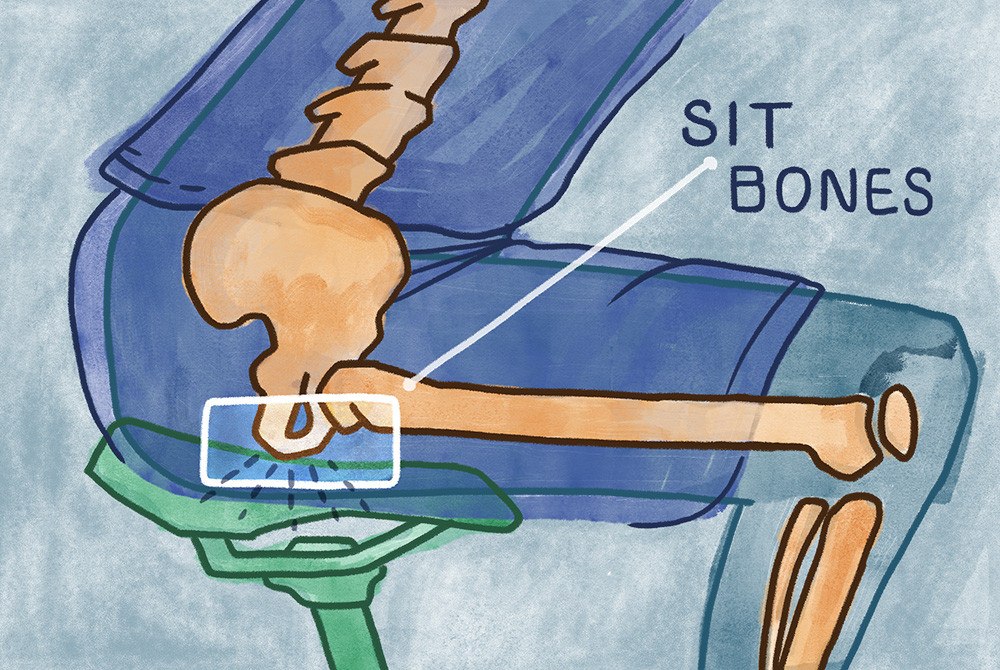 Illustration explaining sit bones in relation to a bicycle saddle.
Illustration explaining sit bones in relation to a bicycle saddle.
Understanding Why Bike Sitting Down Can Hurt
For women, discomfort from bike sitting down often stems from excessive pressure on the vulva’s delicate tissues. Ideally, when you’re sitting on your bike saddle, your weight should be primarily supported by your sit bones. These are the bony protrusions at the base of your pelvis. If too much pressure is placed directly on the vulva—the labia and surrounding areas—it can lead to pain, swelling, and numbness.
Incorrect saddle adjustment is a frequent culprit behind this excessive vulvar pressure. Saddle height, tilt, and fore/aft position all play a critical role. Furthermore, the overall bike fit and the saddle itself can contribute to the issue. Remember, there’s no universal “perfect” bike setup. The key is to adjust your bike to suit your unique body and riding style. It’s all about achieving comfort and a good feeling when you’re bike sitting down and riding.
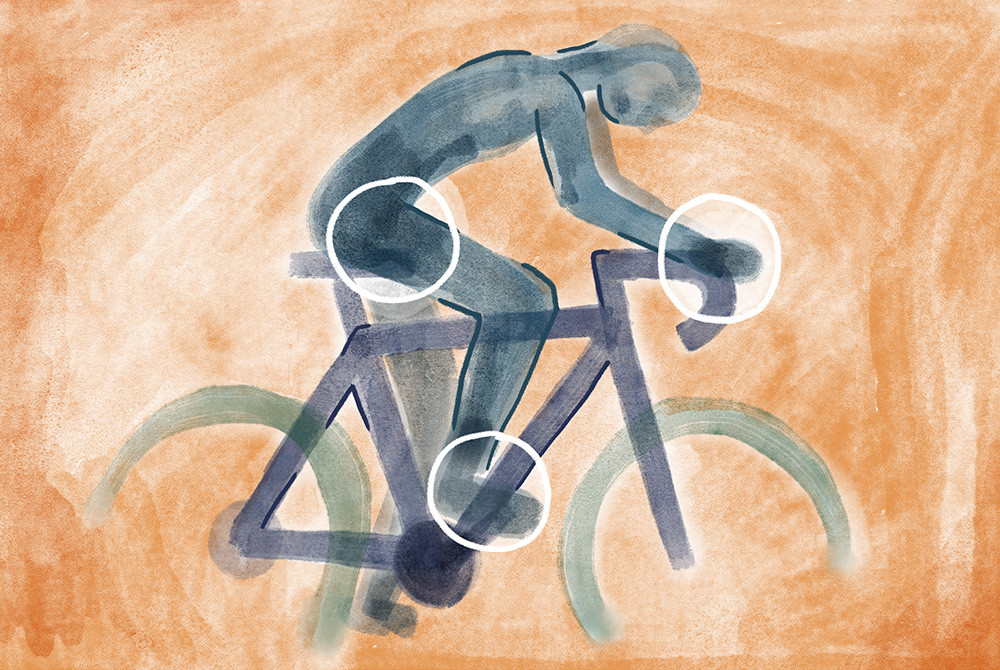 An illustration showing the three main contact points on a bicycle.
An illustration showing the three main contact points on a bicycle.
Saddle Height Adjustment for Comfortable Bike Sitting Down
Saddle height is essential for balancing your weight across the three primary contact points when bike sitting down: your feet, hands, and sit bones. If the saddle is too high or too low, it can shift weight away from your feet and hands and increase pressure on your crotch. Generally, you should aim for a slight bend in your knee when your leg is fully extended at the bottom of the pedal stroke. Make small adjustments to your saddle height until you feel balanced and comfortable across these three contact points while bike sitting down and pedaling.
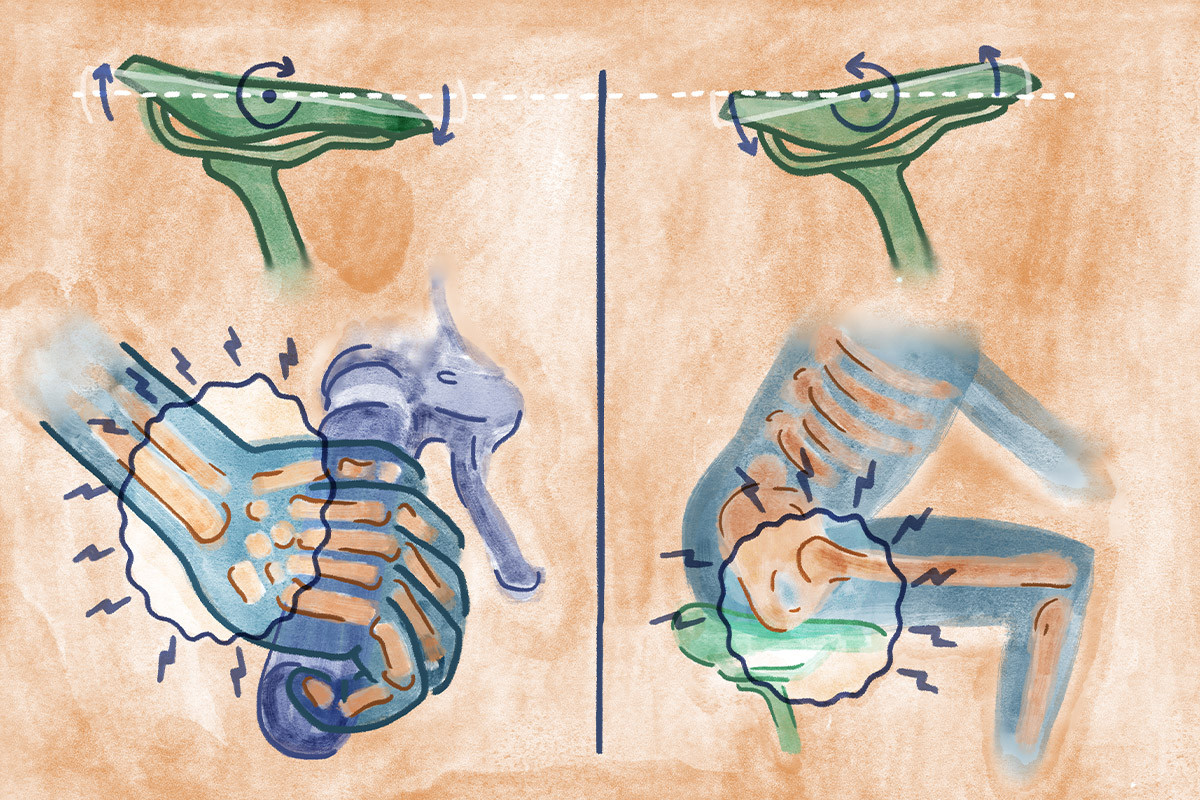 Illustrates the effect of tilting a bike saddle too far up or down.
Illustrates the effect of tilting a bike saddle too far up or down.
Saddle Tilt: Finding the Right Angle for Bike Sitting Down
Start by setting your saddle to a neutral, level position. The saddle nose should not be angled significantly upwards or downwards. If the nose is tilted upwards, it can press uncomfortably into your soft tissues. Conversely, a downward tilt can cause you to slide forward onto the narrower part of the saddle, increasing pressure. Downward tilt can also place excessive weight on your hands, potentially leading to wrist pain when bike sitting down for longer rides.
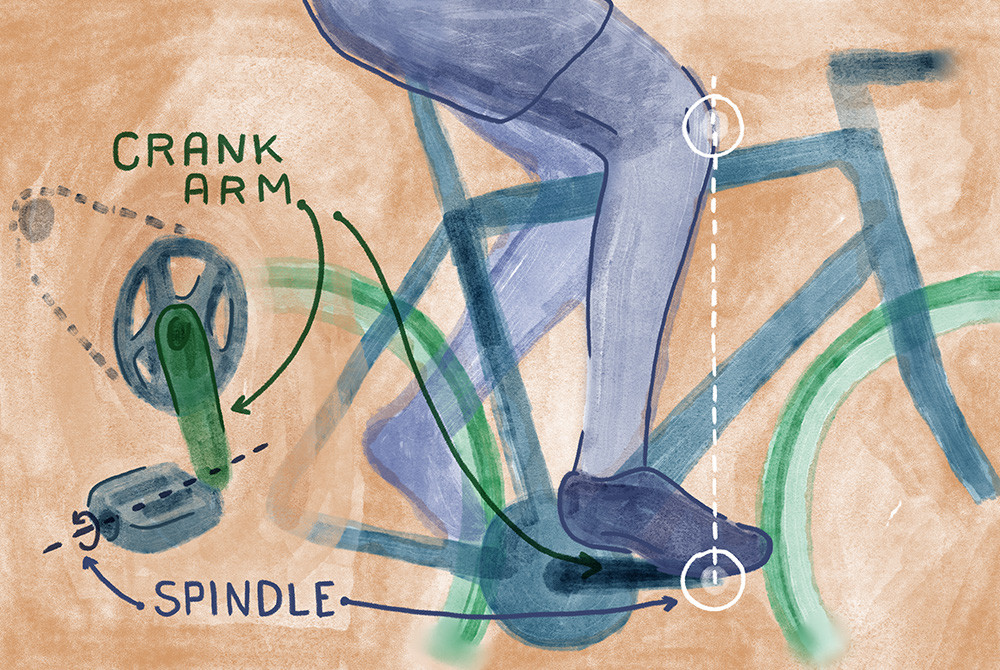 Illustrates a tip for setting the fore/aft position of your bicycle saddle.
Illustrates a tip for setting the fore/aft position of your bicycle saddle.
Fore-Aft Saddle Position and Bike Sitting Down Comfort
The fore-aft position of your saddle affects how you distribute your weight while bike sitting down and pedaling. A general guideline is to check your knee position when the crank arm is horizontal. Ideally, your kneecap should be positioned directly above the pedal spindle.
While precise measurement methods exist, the most important thing for beginners to understand is that this fore-aft adjustment is available and impacts saddle comfort and overall bike fit. If you’re unsure where to start, position the saddle in the middle of its adjustment range and make small changes from there, paying attention to how it feels when bike sitting down.
Bike Fit Considerations Beyond Saddle Adjustments
The human body and the bicycle are complex systems that need to work in harmony. Saddle adjustments are always made in relation to other bike components, and the entire bike should be fitted to your individual body.
If you’ve meticulously adjusted your saddle and are still experiencing discomfort when bike sitting down, the issue might stem from a broader bike fit problem. For instance, the bike frame might be the wrong size, or your handlebars might need adjusting in height or reach. In such cases, seeking a professional bike fit assessment at a reputable bike shop or from a physical therapist specializing in cycling can be invaluable.
Choosing the Right Saddle for Comfortable Bike Sitting Down
Ideally, after making saddle adjustments and addressing bike fit, you should experience significant improvement and enjoy pain-free bike sitting down. However, if discomfort persists even after these steps, it may be time to consider a different saddle.
A significant challenge for women is that many standard bike saddles are designed with male anatomy in mind. Women generally have wider sit bones than men, often requiring wider saddles. Fortunately, there’s a growing market of saddles specifically designed for women’s anatomy.
Saddle choice is highly personal due to the wide variation in body shapes. A saddle that works perfectly for one person might be uncomfortable for another. The best approach is to try out different saddles before purchasing, to find what truly feels comfortable for your body when bike sitting down.
Real Experiences and Getting Back to Comfortable Bike Sitting Down
Many cyclists have stories about saddle issues and adjustments. Some have never experienced problems, while others have navigated various saddle dramas. These experiences highlight that finding comfort when bike sitting down can sometimes be a journey of experimentation and adjustment.
Even when faced with awkward or painful situations, experienced cyclists often approach these challenges with humor and a willingness to experiment, make changes, and get back on the bike. This resilient attitude is key to enjoying cycling.
Remember, cycling endurance should not be about enduring unnecessary pain. If bike sitting down becomes painful, it’s a problem that can be solved. It might be a simple fix or require more time and adjustments, but your body will thank you for prioritizing comfort and proper bike setup.
Troubleshooting Crotch Pain While Bike Sitting Down: A Quick Guide
- Adjust your saddle: Fine-tune the height, tilt, and fore-aft position.
- Evaluate your overall bike fit: Consider if the frame size or handlebar position is contributing to the problem.
- Explore different saddles: Experiment with saddles designed for women or with different widths and shapes to find a better fit for comfortable bike sitting down.

